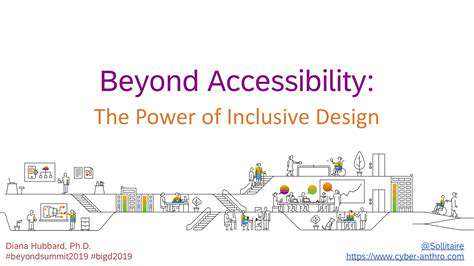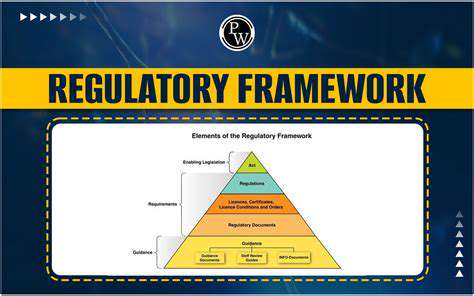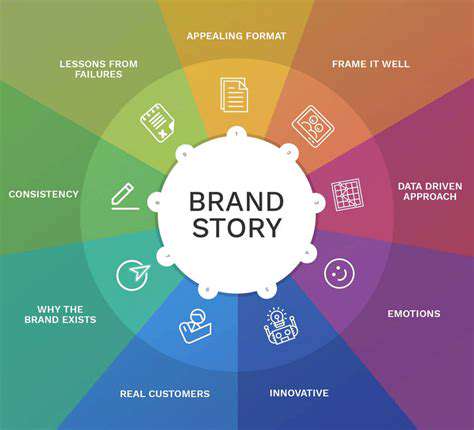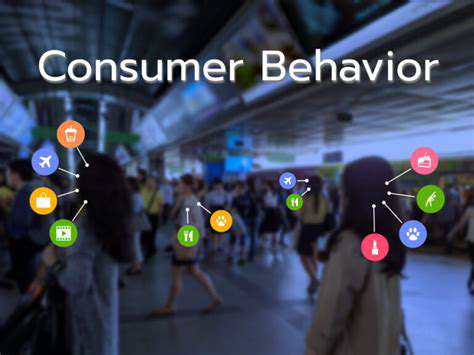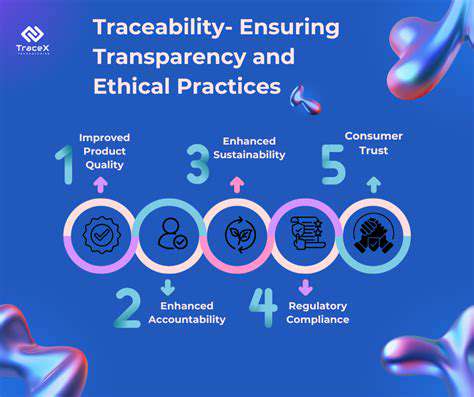Designing for Accessibility in Immersive Spaces
Augmented reality (AR) overlays digital information onto the real world, offering exciting possibilities for interactive experiences. This technology is rapidly evolving, moving beyond simple overlays to incorporate sophisticated 3D models and interactive elements. Designers must consider how AR applications can be accessible to users with diverse needs, including those with visual impairments, cognitive differences, or motor skill limitations.
Careful consideration of the visual cues and interaction methods within AR applications is crucial. For example, ensuring sufficient contrast between digital overlays and real-world environments is essential for users with low vision. Similarly, designing intuitive and adaptable interaction methods, such as voice commands or alternative input devices, can enhance accessibility for users with dexterity challenges.
Virtual Reality: Creating Immersive Environments
Virtual reality (VR) transports users to entirely digital environments, offering a unique opportunity for interactive learning and engagement. VR games, simulations, and training programs can be highly effective but require careful design to cater to diverse user needs. Providing clear and concise instructions within VR environments is vital for users with cognitive differences, and ensuring the environment is navigable for users with limited mobility is equally crucial.
Haptic Feedback: Enhancing Sensory Experiences
Haptic feedback, which involves stimulating the sense of touch, can significantly enhance the immersion and realism of both AR and VR experiences. Designers can use haptic feedback to convey information, provide tactile cues, and create a more engaging and intuitive user experience. However, careful consideration of the intensity and type of haptic feedback is needed to avoid discomfort or exclusion for certain users. Consideration must be given to those with sensitivities to certain types of haptic feedback.
Accessibility Considerations for Sensory Processing Differences
Users with sensory processing differences may find certain immersive technologies overwhelming or inaccessible. Designers should be aware of the potential for sensory overload and consider strategies to mitigate these effects. This might involve adjustable features that allow users to control the intensity of visual or auditory elements within the environment. For example, offering an option to adjust the volume of sound effects or the brightness of visual displays is crucial.
Universal Design Principles for Inclusive Experiences
Adopting universal design principles is essential for creating immersive experiences that are accessible to a broad range of users. This involves designing for flexibility, allowing for a variety of user needs and abilities. Designing interfaces that can be easily navigated with alternative input devices or voice commands is an important aspect of this. Additionally, providing clear and concise instructions that can be easily understood by users with varying levels of familiarity with technology will contribute to a more inclusive experience.
User Research and Feedback: Iterative Design for Accessibility
Conducting thorough user research and gathering feedback from diverse user groups are crucial steps in the design process. This allows designers to identify potential accessibility barriers and incorporate solutions into the design. Involving users with disabilities in the design process can provide valuable insights and ensure that the final product meets their specific needs. Actively soliciting feedback throughout the design process, and incorporating that feedback, is critical to building truly accessible immersive technologies.

Navigating the Digital World: Interaction Design Considerations
User Experience and Accessibility
A crucial aspect of interaction design is prioritizing user experience (UX) and accessibility. This involves understanding the diverse needs and abilities of users, from those with visual impairments to users with cognitive differences or motor limitations. A well-designed interaction should be intuitive and easy to understand, regardless of the user's background or technological proficiency. This means thoughtful consideration of color contrast, font sizes, keyboard navigation, and alternative text for images.
Accessibility isn't just a compliance issue; it's a fundamental principle of good design. By ensuring inclusivity, designers create a more welcoming and usable experience for everyone, fostering a more equitable digital landscape.
Clear Information Architecture
Effective information architecture is critical for guiding users through a digital product or service. A well-structured website or application with clear navigation, logical organization, and intuitive labeling makes it easier for users to find the information they need. This includes using consistent terminology, employing hierarchical structures, and implementing search functionalities for efficient retrieval of content.
Intuitive Navigation and Feedback
Navigating a digital environment should feel natural and predictable. Clear and concise navigation menus, intuitive interaction patterns, and immediate feedback loops are essential for maintaining user engagement. When users interact with a system, they need to understand the effect of their actions and get prompt confirmation. This minimizes frustration and encourages continued use.
Well-designed feedback mechanisms, such as loading indicators or success messages, provide valuable context and enhance the overall user experience. Providing visual and/or auditory cues is critical in ensuring users are aware of the system's response to their input.
Visual Design and Branding
Visual design plays a significant role in creating a positive and engaging user experience. Consideration of color palettes, typography, imagery, and overall aesthetics are crucial for establishing brand identity and conveying information effectively. These elements should not only be visually appealing but also contribute to the overall accessibility and usability of the product.
Consistent branding across platforms and interfaces creates a cohesive user experience. This consistency promotes recognition and trust, which are essential for building a positive reputation and user loyalty. Visually appealing and well-designed interfaces are more engaging and contribute to a better user experience, particularly for those with cognitive impairments.
Usability Testing and Iteration
Thorough usability testing is essential for identifying potential usability issues and areas for improvement in interaction design. Testing with diverse user groups provides valuable insights into how real people interact with the product, revealing pain points and areas where the design could be more intuitive. This iterative approach allows for continuous refinement and improvement based on user feedback.
Gathering data through various testing methods, including user interviews, surveys, and A/B testing, provides insights into what works and what doesn't. This data-driven approach ensures that the design is responsive to user needs and continuously evolves to meet the requirements of various user groups. Incorporating user feedback throughout the design process is crucial for creating a truly accessible and user-friendly product or service.
